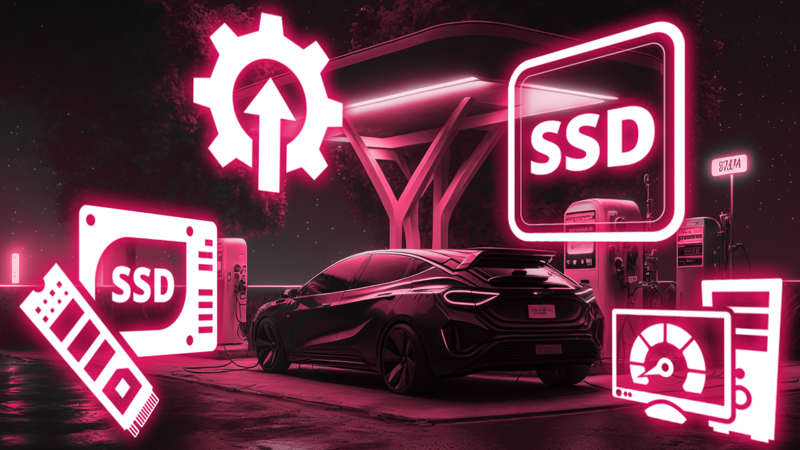
Endurance of an SSD and the Mileage of a Car: An Analogous Analysis
Choosing a car based on mileage and choosing a NAND flash based on endurance are in many ways related. It gets interesting when we delve deeper into the granularity of understanding what exactly one can define in just one matrix of mileage/endurance.
The concept of endurance is central to both Solid State Drives (SSDs) and cars, as each system faces unique challenges in maintaining optimal performance and longevity. Although these entities operate in entirely different domains – digital storage vs. mechanical transportation – a comparative analysis of the parameters affecting their endurance sheds light on the critical factors for both. Let's explore the corresponding parameters that influence SSD endurance and car mileage.
1. NAND Flash Type vs. Engine Type:
In the SSD realm, the type of NAND flash memory employed plays a vital role in determining endurance. Single-Level Cell (SLC) NAND, akin to a high-performance sports car engine, provides the greatest endurance due to its ability to withstand numerous Program/Erase cycles. On the other hand, Multi-Level Cell (MLC), Triple-Level Cell (TLC), and Quad-Level Cell (QLC) NAND, like different classes of car engines, offer varying levels of endurance based on their complexity and efficiency.
2. P/E Cycles vs. Fuel Efficiency:
SSD endurance relies on the number of Program/Erase (P/E) cycles each NAND cell can endure, similar to a car's fuel efficiency. Just as an efficient car requires less fuel to travel a certain distance, SSDs with higher P/E cycle ratings can endure more write operations before performance degradation occurs.
3. Over-Provisioning vs. Engine Size:
Over-provisioning, where spare NAND cells are used for wear levelling and garbage collection, correlates to the size of a car's engine. Vehicles with larger engines can handle heavier loads and greater demands, comparable to how over-provisioning allows SSDs to manage data more effectively, enhancing the product’s endurance.
4. Controller and Firmware vs. Car's Transmission and ECU:
The SSD's controller and firmware serve as the brain of the storage system, analogous to a car's transmission and electronic control unit (ECU). A well-designed and efficient controller/firmware combination ensures optimal data management and distribution, enhancing SSD endurance, just as an advanced transmission and ECU optimize a car's performance and mileage.
5. Workload and Write Patterns vs. Driving Conditions:
The workload and write patterns applied to an SSD can impact its endurance, much like different driving conditions affect a car's mileage. Intensive write-heavy workloads with frequent small random writes put more stress on the SSD, reducing its endurance. Similarly, driving in challenging conditions like stop-and-go traffic or hilly terrain decreases a car's mileage due to increased energy consumption and mechanical stress.
Conclusion:
By drawing an analogy between the parameters affecting SSD endurance and car mileage, we gain a deeper appreciation for the complexities involved in achieving optimal performance and longevity in both realms. Just as car manufacturers strive to build efficient and reliable vehicles, SSD manufacturers continually innovate to enhance endurance and reliability in the fast-evolving world of data storage. Understanding these analogous parameters allows us to make informed decisions when choosing SSDs or cars to meet specific performance and longevity requirements.
Written by Anil Burra
For more information, please contact sales@intelligentmemory.com or Anil Burra directly.
Follow us on LinkedIn: https://lnkd.in/eFfUnWRW
Read original article: Endurance of an SSD and Mileage of a Car: An Analogous Analysis | LinkedIn
